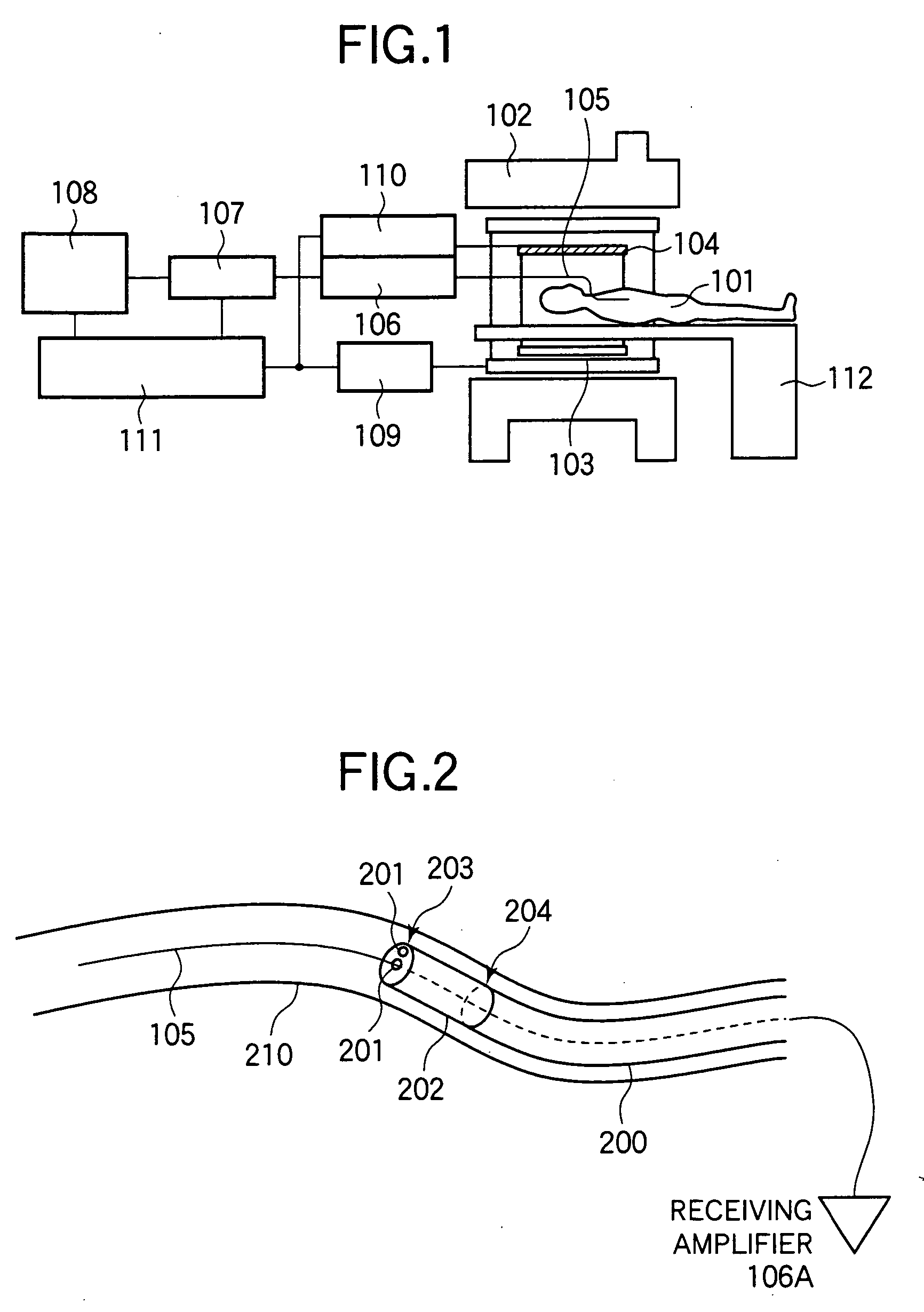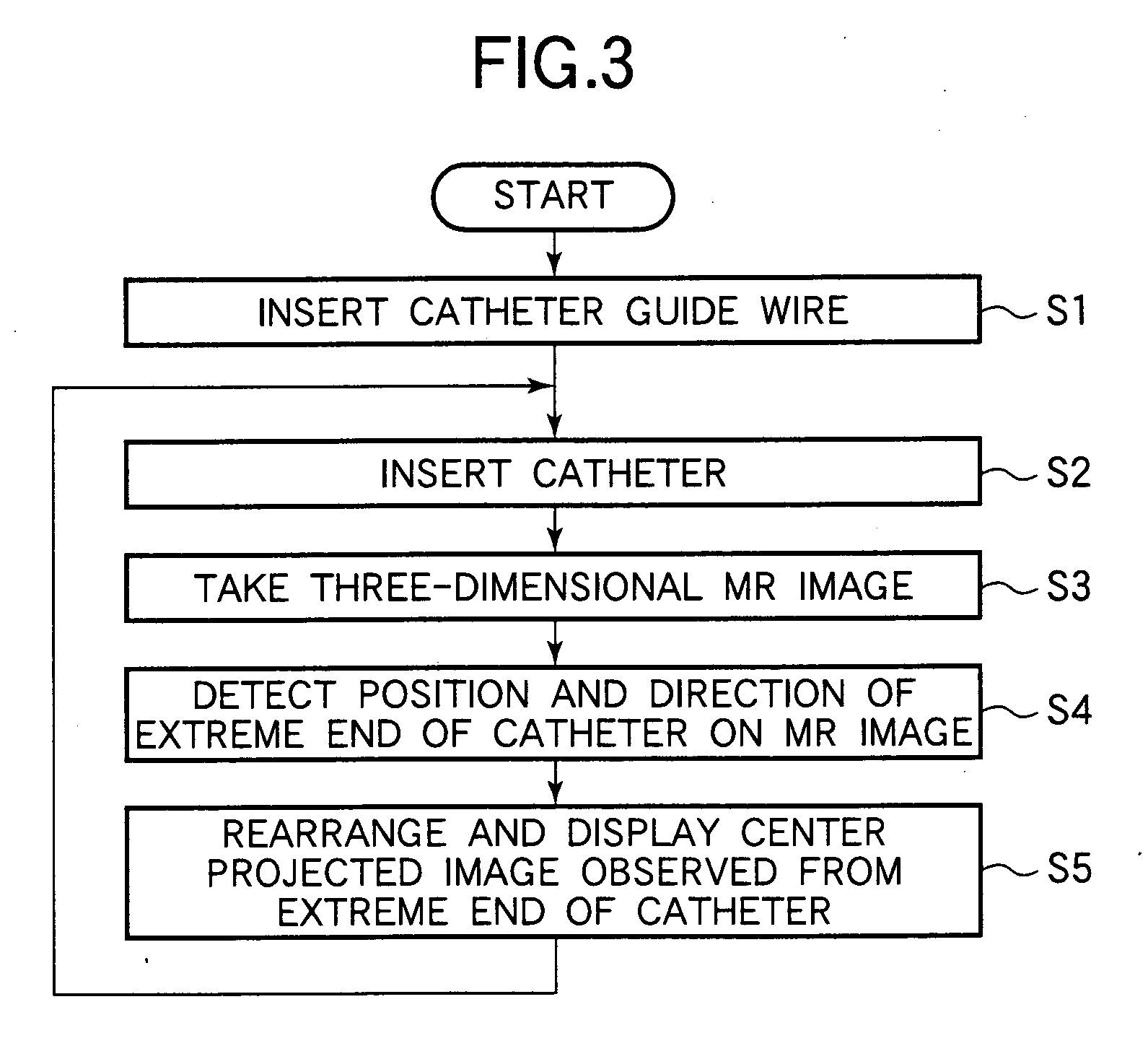Endoscopic image pickup method and magnetic resonance imaging device using the same
a pickup method and magnetic resonance imaging technology, applied in the field of endoscopic image pickup method and magnetic resonance imaging device using the same, can solve the problems of difficult detection of peculiar indexes provided with the catheter based on three-dimensional image data, deterioration of real-time imaging properties, etc., and achieves short measuring time, reduced number of slices, and long measuring time
- Summary
- Abstract
- Description
- Claims
- Application Information
AI Technical Summary
Benefits of technology
Problems solved by technology
Method used
Image
Examples
Embodiment Construction
[0029] Embodiments of the present invention will be explained with reference to the figures in detail.
[0030]FIG. 1 shows the overall arrangement of an MRI apparatus to which the present invention is applied. The MRI apparatus includes a static magnetic field magnet 102, a gradient magnetic field generating coil 103, an RF irradiating coil 104, a guide wire 105 that also acts as an RF receiving antenna for detecting nuclear magnetic resonance signals generated from a patient 101, and a bed 112 for carrying the patient into a measuring space, and these components are installed in an imaging room. The static magnetic field magnet 102 generates a uniform magnetic field in the measuring space, the gradient magnetic field generating coil 103 gives a magnetic field gradient to the static magnetic field generated by the static magnetic field magnet 102, and the RF irradiating coil 104 irradiates a high frequency magnetic field to the patient placed in the measuring space.
[0031] A permanen...
PUM
 Login to View More
Login to View More Abstract
Description
Claims
Application Information
 Login to View More
Login to View More - R&D
- Intellectual Property
- Life Sciences
- Materials
- Tech Scout
- Unparalleled Data Quality
- Higher Quality Content
- 60% Fewer Hallucinations
Browse by: Latest US Patents, China's latest patents, Technical Efficacy Thesaurus, Application Domain, Technology Topic, Popular Technical Reports.
© 2025 PatSnap. All rights reserved.Legal|Privacy policy|Modern Slavery Act Transparency Statement|Sitemap|About US| Contact US: help@patsnap.com



